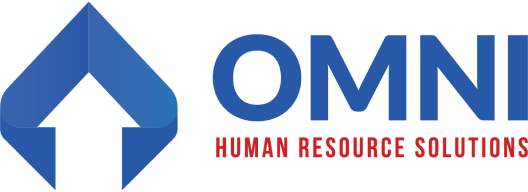In today’s complex and fast-moving workplace, building high-impact teams takes more than simply grouping talented individuals together. True success depends on how well teams collaborate—how they communicate, align around a shared purpose, and support one another in pursuit of common goals. As HR consultants, we’ve seen firsthand how intentional collaboration in the workplace can elevate not just team performance but the overall health and wellbeing of an organization.
Whether you’re leading a department, launching a cross-functional team initiative, or managing remote teams, fostering a collaborative culture requires deliberate strategy, clear expectations, and a deep understanding of team dynamics.
Clarifying Team Structure to Elevate Collaboration
Not all teams operate the same way—and recognizing the differences is essential to setting them up for success. Just like in sports, team structures range from independent to fully interdependent. Matching the structure to your goals helps define expectations for team communication, accountability, and collaboration.
The Golf Team: Independent and Supportive
These teams are independent and supportive—like a golf team, where individuals perform separate tasks and provide encouragement but operate mostly on their own. This setup is common in roles such as sales, consulting, or territory-based work, where each team member has a distinct responsibility that contributes to the broader objective.
This structure works well when:
- Roles are autonomous and expertise-driven
- Outcomes depend on individual performance
- Communication is focused more on alignment than daily coordination
Team building in this model is about reinforcing a shared mission and maintaining morale, even if collaboration is minimal.
The Relay Team: Mixed-Function, Sequential Collaboration
These teams resemble track or swimming relays—mixed-function teams where individual performance contributes to a group outcome. Members rely on each other in sequence, passing work along at key handoff points. Think marketing to sales, engineering to production, or any team responsible for different phases of a larger workflow.
This approach requires:
- Defined handoffs and timing
- Trust in team members to complete their leg of the “race”
- Systems to support project management and visibility
If you’re wondering how to increase collaboration between teams, one effective way is to clarify these interdependencies and align tools and processes to support seamless transitions.
The Basketball Team: Fully Interdependent
These are highly collaborative teams, like in basketball or soccer, where collaboration is constant, roles shift fluidly, and success hinges on collective action. Team members adjust on the fly, support one another in real time, and rely heavily on shared decision-making.
This structure thrives when:
- Work is dynamic and fast-moving
- Success requires continuous input from multiple roles
- Innovation, adaptability, and mutual support are key
In this model, real-time collaboration, trust, and strong collaborative culture are essential. Team leaders should prioritize psychological safety, open dialogue, and clear expectations. This is also where team building activities and workplace wellness programs ideas that promote emotional intelligence and stress management can make a powerful impact.
Building Blocks of a Collaborative Culture
Collaboration is more than cooperation—it’s an active process rooted in trust, communication, and aligned action. Here are foundational practices that help cultivate collaborative teams and demonstrate how to increase collaboration between teams across your organization:
Hire for Both Skills and Cultural Fit
People who align with your mission and values are more likely to encourage collaboration and contribute to team harmony. Skills matter—but so does the ability to support, listen, and adapt within a team.
That alignment starts with the recruitment process—engaging, values-based hiring practices help attract candidates who are naturally inclined to collaborate and thrive in team settings
Use Team-Building Workshops to Strengthen Interpersonal Bonds
Intentional team building activities build empathy, uncover strengths, and reinforce team communication. For remote teams, virtual sessions using collaboration tools can create similar connections and boost engagement.
Establish Shared Goals and Mutual Accountability
Aligning everyone around a common goal builds ownership and clarity. When roles and responsibilities are tied to a broader purpose, it motivates individuals to show up for their teammates—and for the mission.
Enable Cross-Functional Collaboration
Project-based work across departments helps teams work beyond silos and strengthens organizational flexibility. These initiatives expand innovation and help employees better understand how each part of the business connects.
If you’re seeking how to increase collaboration between teams, this is one of the most effective starting points—break down barriers, promote dialogue, and create incentives for shared success.
Invest in the Right Collaboration Tools
Whether your team is remote, hybrid, or onsite, leveraging project management tools and platforms like Slack, Teams, or Asana can help facilitate real-time collaboration and visibility. The right infrastructure empowers people to share information, build trust, and solve problems quickly.
How Collaboration Connects to Workplace Wellness
It’s no coincidence that some of the most effective workplace wellness programs ideas focus on community and connection. Teams thrive when employees feel valued, heard, and supported—conditions created by strong collaboration.
Wellness initiatives that promote emotional intelligence, stress management, and psychological safety do more than support individuals—they reinforce the foundation for team-based success. In fact, organizations that link collaboration with wellbeing often see measurable improvements in morale, retention, and performance.
From meditation apps to leadership coaching to collaboration in the workplace training, the most impactful workplace wellness programs ideas go hand-in-hand with team building and culture enhancement.
Your Next Step Toward Stronger Teams
If you’re looking to improve collaboration, boost engagement, or explore workplace wellness programs ideas that actually move the needle, OMNI is here to help.
From leadership development and organizational design to cross-functional project facilitation and HR outsourcing, we bring decades of experience helping companies build teams that last.
Partner with OMNI to build collaborative, high-performing teams that drive results. Contact our experts today to start your journey.

Authored by: Dr. Roger Dusing, Senior Consultant

